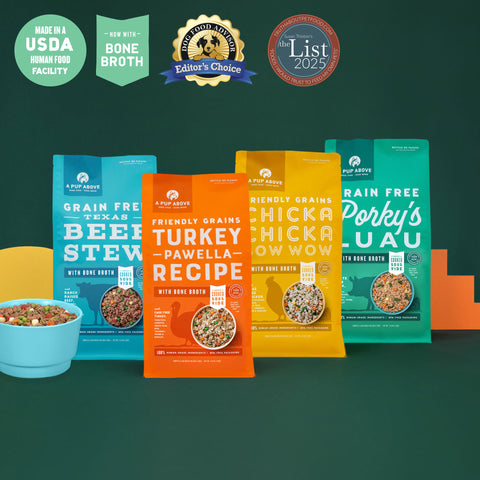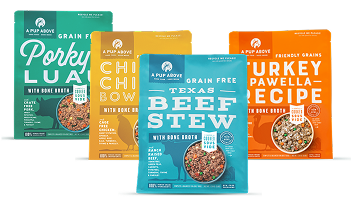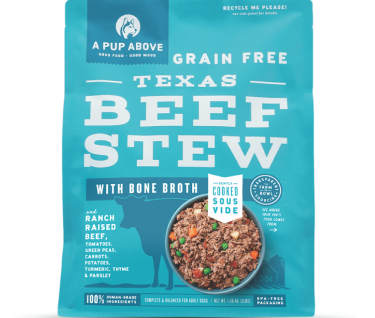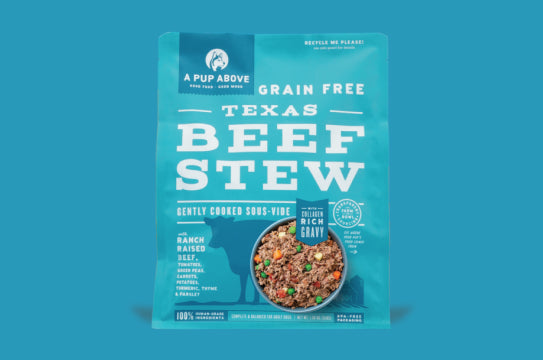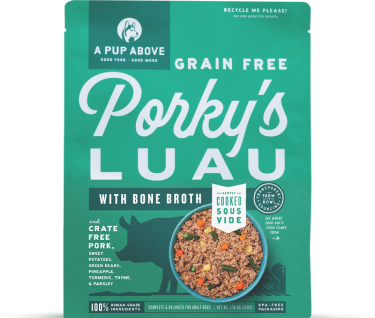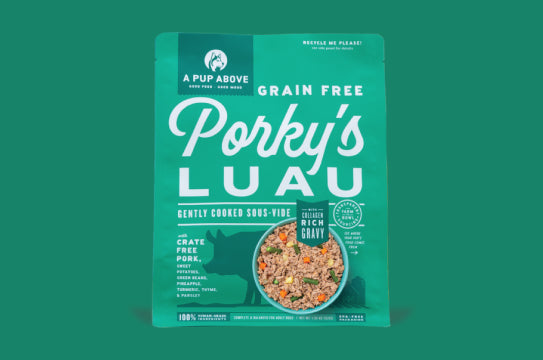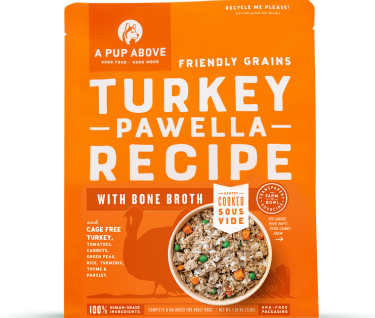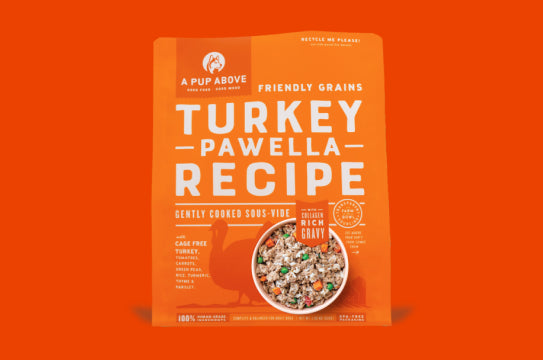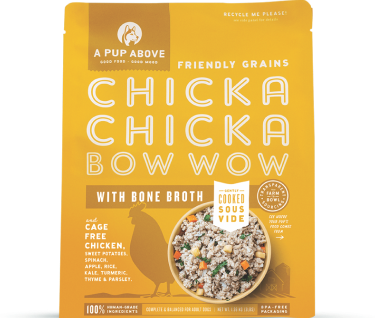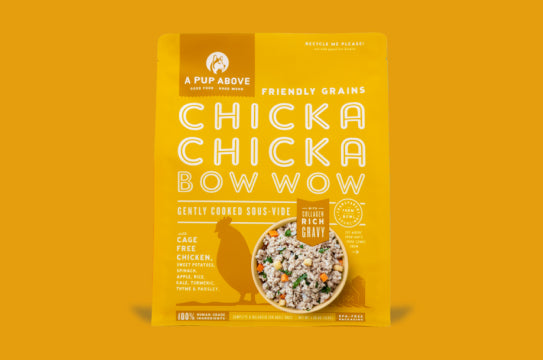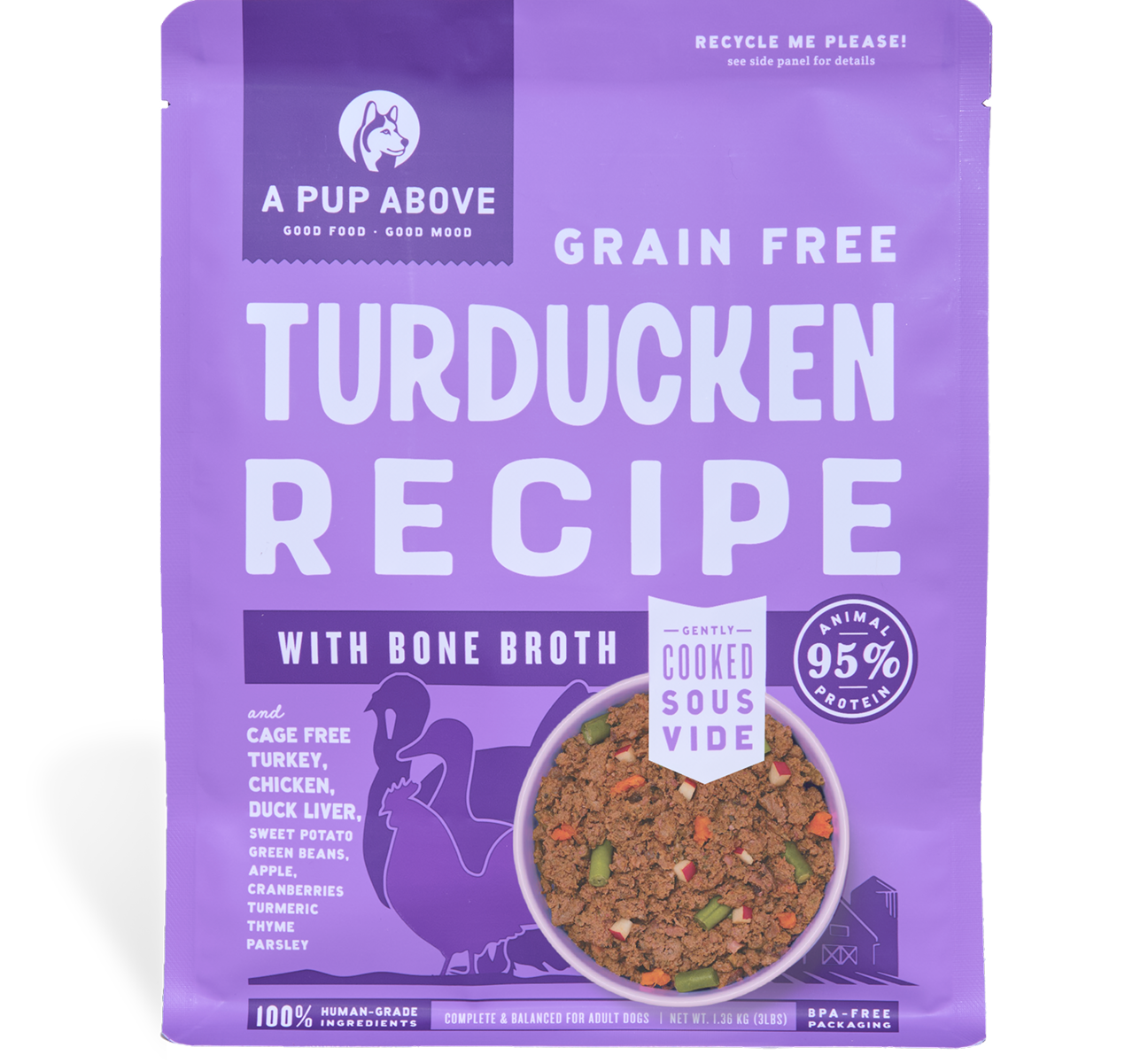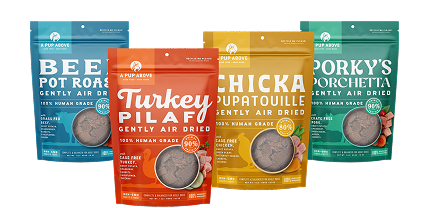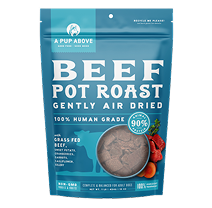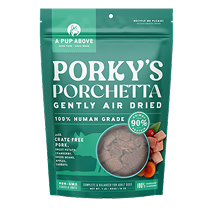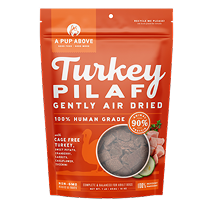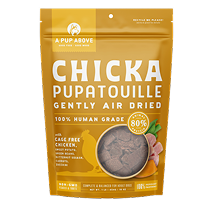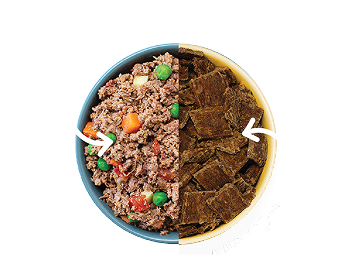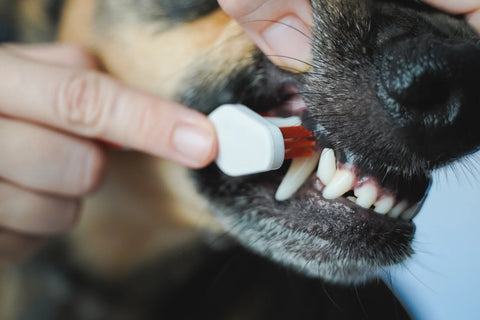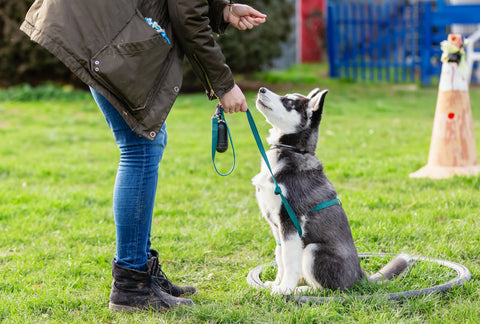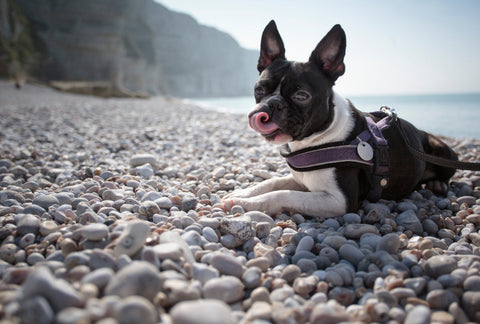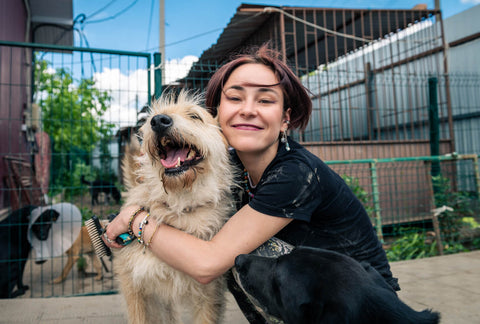
Can Dogs Eat Papaya?
Key Takeaways:
- When served in moderation, papaya can offer some real benefits for your dog, including digestive support, added vitamins, and hydration.
- While the flesh of a papaya is fine for dogs in small amounts, the skin and seeds are not. Papaya skin is fibrous and hard to digest, which can lead to stomach upset or even a blockage. Papaya seeds contain small amounts of a compound called benzyl isothiocyanate, which can be toxic.
- As a general rule, treats like papaya should make up no more than 10% of your dog’s daily calorie intake. This helps ensure they’re still getting the right balance of protein, fat, and carbs from their regular food.
At A Pup Above, we get it — as dog parents, we’re always on the lookout for fresh, real foods to share with our pups. We want to mix things up, add a little variety, and keep their meals as interesting as ours. And if you’re anything like us, you’ve probably wondered about papaya. It’s bright, sweet, and feels a little more exciting than the usual apple slices or baby carrots.
But before you toss a chunk to your furry taste tester, it’s worth knowing if this tropical treat actually belongs in your dog’s bowl. From what parts are safe to serve to how much is too much, we’ve got the scoop.
Is Papaya Good for Dogs?
Papaya is a tropical fruit known for its bright orange flesh, sweet flavor, and refreshing texture. It’s native to Central America but has become a staple in smoothies, fruit salads, and fresh-pressed juices around the world.
It’s also packed with nutrients that make it a popular pick for health-conscious humans — and a surprisingly good bite for dogs. In fact, when served in moderation, papaya can offer some real perks for your pup.
It’s a Digestive Helper
Papaya contains a natural enzyme called papain, which helps break down proteins and can make digestion a little easier for your dog. It’s also high in fiber, which can help keep things moving smoothly in the digestive tract. If your pup struggles with the occasional belly ache or less-than-perfect poops, a little papaya might help get things back on track.
It’s Loaded With Vitamins
Ever feel like your dog has more energy than you do? Papaya is packed with vitamins that can help keep it that way.
It’s a great source of vitamins A, C, E, and K, all of which play a role in immune function, cell health, and overall vitality. Vitamin A supports eye health, vitamin C acts as an antioxidant, vitamin E is great for skin and coat, and vitamin K helps with proper blood clotting.
It’s a Hydrating, Low-Cal Treat
Papaya is about 88% water, which means it’s a refreshing, hydrating snack that won’t weigh your pup down. This can be especially helpful if your dog tends to ignore the water bowl or if you’re looking for a cooling treat on a hot day. Plus, it’s naturally low in calories and fat, which makes it a guilt-free option for dogs who need to watch their waistlines.
It’s Got the Good Stuff
Papaya isn’t just about vitamins. It’s also a good source of potassium, folate, and magnesium, which support everything from muscle function to heart health. So, if you’re looking to switch things up at mealtime, papaya is a solid choice.
Can Dogs Eat Papaya Skin or Seeds?
Short answer: nope. While the flesh of a ripe papaya is perfectly fine for dogs in small amounts, the skin and seeds are a different story.
Papaya skin is tough, fibrous, and hard to digest, which can lead to stomach upset or even a blockage if your dog tries to swallow a big piece. It’s also a potential choking hazard, especially for smaller dogs.
As for the seeds, they’re a definite no-go. Papaya seeds contain small amounts of a compound called benzyl isothiocyanate, which can be toxic in large quantities. They’re also hard and slippery, making them a potential choking hazard or cause of digestive issues.
How To Prepare Papaya for Dogs
Wondering how to serve this tropical treat to your pup? Follow these steps:
-
Pick a Ripe One: Choose a papaya that’s slightly soft to the touch and has a sweet, fruity smell. It should have a bright, even color and give a little when you press it. If it’s too hard, it’s not ripe yet, and if it’s too mushy, it might be past its prime.
-
Peel and Seed It: Cut off the ends, then use a sharp knife or vegetable peeler to remove the skin. Cut the papaya in half lengthwise, then scoop out all the seeds with a spoon.
-
Cut Into Bite-Sized Pieces: Slice the peeled, seeded papaya into small chunks that are easy for your dog to chew and swallow. If you have a smaller pup, cut the pieces even smaller to reduce the risk of choking.
-
Store the Extras: If you’re not using the whole papaya, store the extra chunks in an airtight container in the fridge for up to a week, or freeze them for a cool, refreshing snack later.
Once you’ve got your papaya prepped and ready, there are a few fun ways to serve it to your pup. You can keep it simple and toss a few chunks into their bowl at mealtime, or use the pieces as high-value training treats. If your dog loves a little variety, try mashing the chunks into their regular food for a boost of flavor and nutrients.
Feeling creative? Blend the papaya with a little water or plain, unsweetened yogurt for a quick, dog-safe smoothie, or stuff the pieces into a rubber toy like a Kong and freeze for a long-lasting treat. You can even mix it with other dog-friendly fruits like blueberries, apples, or bananas for a nutrient-packed snack that keeps things interesting.
How Much Papaya Can I Feed My Dog?
When it comes to feeding your dog papaya, a little goes a long way. While it’s a healthy, nutrient-packed snack, too much can still lead to tummy troubles.
As a general rule, treats like papaya should make up no more than 10% of your dog’s daily calorie intake. This helps ensure they’re still getting the right balance of protein, fat, and carbs from their regular food.
Here’s a quick guide to portion sizes based on your dog’s size:
-
Small Dogs (up to 20 lbs) – A couple of small chunks (about 1-2 tablespoons) is plenty.
-
Medium Dogs (20-50 lbs) – A few more chunks, roughly 2-3 tablespoons.
- Large Dogs (50+ lbs) – Up to a quarter cup, depending on their size and activity level.
Keep in mind that every dog is different, so start small and see how your pup handles it. If you notice any signs of digestive upset, like loose stools, gas, or a change in appetite, it might be a sign that you’re overdoing it.
And remember, papaya should be an occasional treat, not a regular part of their diet. It’s great for shaking things up now and then, but their main meals should still come from a balanced, nutrient-rich dog food like our Turkey Pawella, Texas Beef Stew, or Chicka Chicka Bow Wow, all made with 100% human-grade ingredients and cooked low and slow for maximum flavor.
Are There Potential Health Risks to Giving a Dog Papaya?
Aside from what we've already covered, another thing to watch out for with papaya (or any fruit) is sugar content. Even though papaya is relatively low in sugar compared to many other fruits, dogs who are overweight or diabetic should be offered fruit very sparingly to keep blood sugar levels stable.
Also, some pups might have underlying allergies to certain fruits, including papaya, so it's always best to introduce new treats slowly and keep an eye out for reactions like itchy skin, swelling, or excessive licking. If you notice anything unusual, pause the papaya treats and chat with your vet to play it safe.
FAQ
Is papaya a laxative for dogs?
Because papaya is rich in fiber, it can support regularity (yes, we are talking about your dog’s potty habits). Some dogs, like humans, get constipated and can benefit from some extra fiber-dense fruits.
Are any fruits toxic to dogs?
Keep your pup safe by avoiding citrus fruits, cherries, grapes, persimmons, and pomegranates. Consult a vet if your dog ingests any of these harmful fruits.
What is the healthiest fruit for dogs?
These fruits are full of vitamins, fiber, and different textures for your dog to munch on:
- Apples
- Bananas
- Strawberries
- Berries
- Melon
- Oranges
- Sweet potato
So, Can Dogs Eat Papaya?
Yes, dogs can eat papaya! It’s a tasty way to switch up their snacks and add a little tropical flair to their bowl. Just keep it simple (think: no skin, no seeds, and small portions to keep their tummy happy).
At A Pup Above, we’re all about real, fresh ingredients that dogs love. Our meals are crafted using the sous-vide method to lock in flavor and nutrients, giving your pup the kind of balanced, protein-rich food they deserve.
Ready to upgrade your dog’s mealtime? Check out our lineup of gently cooked, human-grade recipes and see why real food makes a difference.
Sources:
Papaya | Description, Cultivation, Uses, & Facts | Britannica
Papain - an overview | ScienceDirect Topics
Papaya Health Benefits & Downsides | Food Revolution Network
Vitamin A beneficial for eyes, just not for preventing myopia | AOA
Top Stories
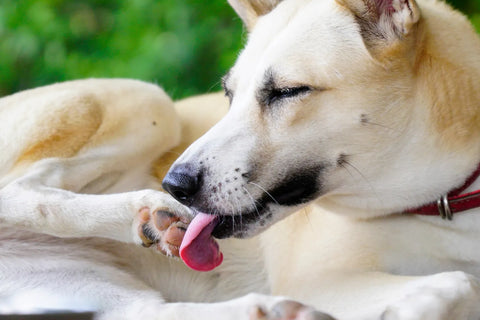
Why Do Dogs Lick Their Paws?

Why Do Dogs Whimper & Make Noises in Their Sleep?
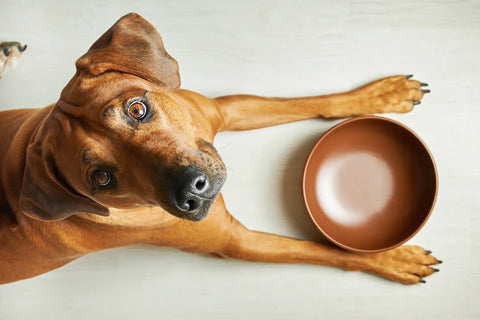
Healthy Vet-Approved Homemade Dog Food Recipes
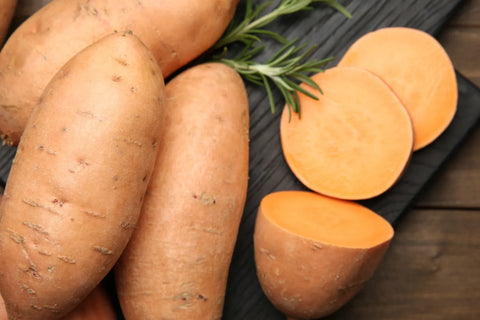
How To Cook Sweet Potatoes for Dogs
